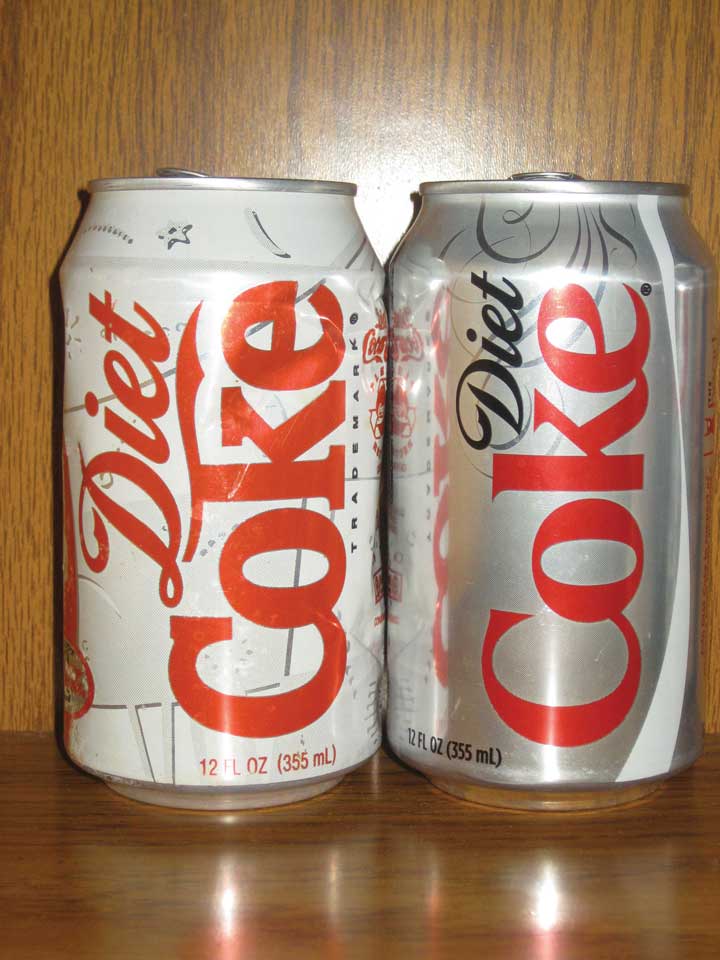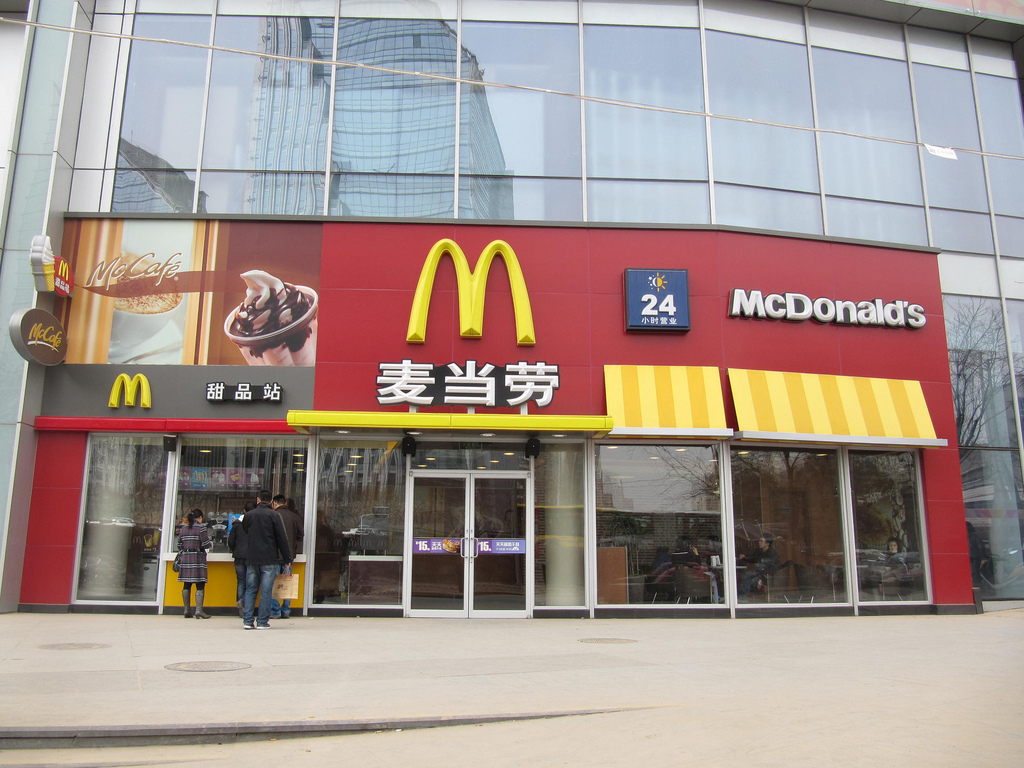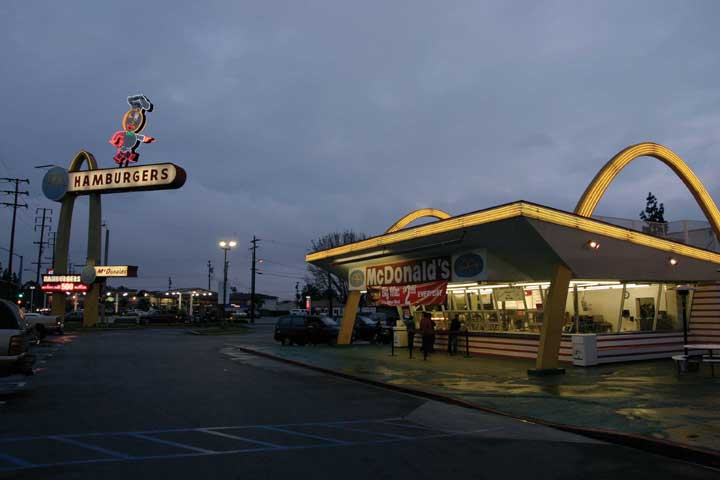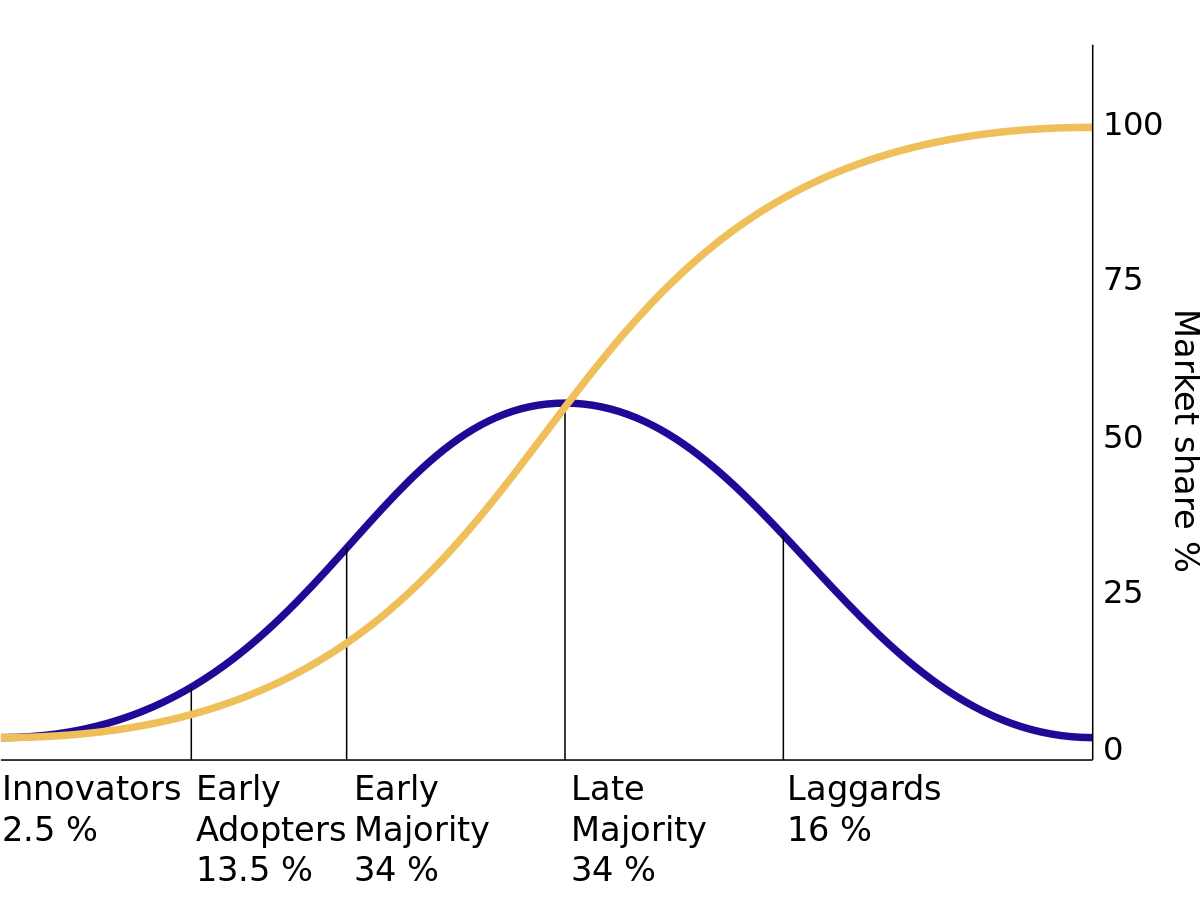Chapter 7: Product
7.5 Managing New Products: The Product Life Cycle & Diffusion of Innovation
Learning Objectives
- Explain how organizations manage offerings after being introduced to the marketplace.
- Explain how managing an offering may be different in international markets.
- Explain the product life cycle and the objectives and strategies for each stage.
- Diffusion of Innovation/Rate of Adoption cycle
Over 30,000 new offerings, including convenience foods, personal care products, electronics, automobiles, pharmaceutical products, hotels, restaurants, and so on, enter the marketplace each year (“Bursting New,” 2019).[1] Other recent new product introductions include many technological products such as video game consoles, mobile phones, and smart watches.
Video 7.1. The 100 Calorie Packs offered by Nabisco proved to be extremely popular. Source: Oreo 100 Calorie Pack on CommercialJudge.
Once a product is created and introduced in the marketplace, the offering must be managed effectively for the customer to receive value from it. Only if this is done will the product’s producer achieve its profit objectives and be able to sustain the offering in the marketplace. The process involves making many complex decisions, especially if the product is being introduced in global markets. Before introducing products in global markets, an organization must evaluate and understand factors in the external environment, including laws and regulations, the economy and stage of economic development, the competitors and substitutes, cultural values, and market needs. Companies also need expertise to successfully launch products in foreign markets. Given many possible constraints in international markets, companies might initially introduce a product in limited areas abroad. Other organizations, such as Coca-Cola, decide to compete in markets worldwide (“Best Global,” 2009).[2]
The product life cycle (PLC) includes the stages the product goes through after development, from introduction to the end of the product. Just as children go through different phases in life (baby, toddler, teenager, adult, and so on), products and services also age and go through different stages. The PLC is a beneficial tool that helps marketers manage the stages of a product’s acceptance and success in the marketplace, beginning with the product’s introduction, its growth in market share, maturity, and possible decline in market share.
The PLC can vary for different products and different product categories. Figure 7.15 illustrates an example of the PLC and shows how a product can move through four stages. However, not all products go through all stages, and the length of a stage can vary. For example, some products never experience market share growth and are withdrawn from the market.

Other products stay in one stage longer than others. For example, in 1992, PepsiCo introduced a product called Clear Pepsi, which rapidly went from introduction to decline. By contrast, Diet Coke entered the growth market soon after its introduction in the early 1980s and then entered (and remains in) the mature stage of the PLC. New computer products and software and video games often have limited life cycles, whereas product categories such as diamonds and durable goods (kitchen appliances) generally have longer life cycles. How a product is promoted, priced, distributed, or modified can also vary throughout its life cycle. Let’s now look at the various PLC stages and what characterizes each.

The Introduction Stage
The first stage in a product’s life cycle is the introduction stage. The introduction stage is the same as commercialization, or the last stage of the new product development process. Marketing costs are typically higher in this stage than in other stages. As an analogy, think about the amount of fuel a plane needs for takeoff relative to the amount it needs while in the air. Just as an airplane needs more fuel for takeoff, a new product or service needs more funds for introduction into the marketplace. Communication (promotion) is needed to generate awareness of the product and persuade consumers to try it, and placement alternatives and supply chains are needed to deliver the product to the customers. Profits are often low in the introductory stage due to the research and development costs and the marketing costs necessary to launch the product.
The length of the introductory stage varies for different products. An organization’s objectives during the introductory stage often involve educating potential customers about its value and benefits, creating awareness, and getting potential customers to try the product or service. Getting products and services, particularly multinational brands, accepted in foreign markets can take even longer. Consequently, companies introducing products and services abroad generally must have the financial resources to make a long-term (longer than one year) commitment to their success.
The specific promotional strategies a company uses to launch a product vary depending on the type of product and the number of competitors it faces in the market. Firms that manufacture products such as cereals, snacks, toothpastes, soap, and shampoos often use mass marketing techniques such as television commercials and Internet campaigns and promotional programs such as coupons and sampling to reach consumers. To reach wholesalers and retailers such as Walmart, Target, and grocery stores, firms utilize personal selling. Many firms promote to customers, retailers, and wholesalers. Sometimes other, more targeted advertising strategies are employed, such as billboards and transit signs (signs on buses, taxis, subways, and so on). For more technical or expensive products such as computers or plasma televisions, many firms utilize professional selling, informational promotions, and in-store demonstrations so consumers can see how the products work.

During introduction, an organization must have enough distribution outlets (places where the product is sold or the service is available) to get the product or service to the customers. The product quantities must also be available to meet demand. For example, when Nintendo’s Wii was first introduced in 2006, the demand for it was so great that stores could not keep them on the shelves. Nintendo eventually increased monthly production to 1.8 million and then 2.4 million (Bernazzani, 2021).[3]
Product pricing strategies in the introductory stage can vary depending on the type of product, competing products, the extra value the product provides consumers versus existing offerings, and the costs of developing and producing the product. Organizations want consumers to perceive that a new offering is better or more desirable than existing products. Two strategies that are widely used in the introductory stage are penetration pricing and skimming. A penetration pricing strategy involves using a low initial price to encourage many customers to try a product. The organization hopes to sell a high volume to generate substantial revenues. New varieties of cereals, shampoo fragrances, detergent scents, and snack foods are often introduced at low initial prices. Seldom does a company utilize a high price strategy with a product such as this. The low initial price of the product is often combined with advertising, coupons, samples, or other special incentives to increase awareness of the product and get consumers to try it.
A company uses a skimming pricing strategy, which involves setting a high initial price for a product, to more quickly recoup the investment related to its development and marketing. The skimming strategy attracts the top, or high end, of the market. Generally, this market consists of customers who are not as price sensitive or who are early adopters of products. Firms that produce electronic products such as smart watches, HD televisions, and electric cars set their prices high in the introductory stage. However, the high price must be consistent with the nature of the product as well as the other marketing strategies being used to promote it. For example, engaging in more personal selling to customers, running ads targeting specific groups of customers, and placing the product in a limited number of distribution outlets are likely to be strategies firms use in conjunction with a skimming approach.
The Growth Stage
If a product is accepted by the marketplace, it enters the growth stage of the PLC. The growth stage is characterized by increasing sales, more competitors, and higher profits. Unfortunately for the firm, the growth stage attracts competitors who quickly enter the market. For example, when Diet Coke experienced great success, Pepsi soon entered with Diet Pepsi. You’ll notice that both Coca-Cola and Pepsi have similar competitive offerings in the beverage industry, including their own brands of bottled water, juice, and sports drinks. As additional customers begin to buy the product, manufacturers must ensure that the product remains available to customers or run the risk of them buying competitors’ offerings. For example, the producers of video game systems such as Nintendo’s Wii could not keep up with consumer demand when the product was first launched. Consequently, some consumers purchased competing game systems such as Microsoft’s Xbox.

A company sometimes increases its promotional spending on a product during its growth stage. However, instead of encouraging consumers to try the product, the promotions often focus on the specific benefits the product offers and its value relative to competitive offerings. In other words, although the company must still inform and educate customers, it must counter the competition. Emphasizing the advantages of the product’s brand name can help a company maintain its sales in the face of competition. Although different organizations produce personal computers, a highly recognized brand such as Apple strengthens a firm’s advantage when competitors enter the market. New offerings that utilize the same successful brand name as a company’s already existing offerings, which is what Apple does with its products, can give a company a competitive advantage. Companies typically begin to make a profit during the growth stage because more units are being sold and more revenue is generated.
The number of distribution outlets (stores and dealers) utilized to sell the product can also increase during the growth stage as a company tries to reach as much of the marketplace as possible. Expanding a product’s distribution and increasing its production to ensure its availability at different outlets usually results in a product’s costs remaining high during the growth stage. The price of the product itself typically remains at about the same level during the growth stage, though some companies reduce their prices slightly to attract additional buyers and meet the competitors’ prices. Companies hope that by increasing their sales, they can also improve their profits.
The Maturity Stage
After many competitors enter the market and the number of potential new customers declines, the sales of a product typically begin to level off. This indicates that a product has entered the maturity stage of its life cycle. Most consumer products are in the mature stage of their life cycle; their buyers are repeat purchasers versus new customers. Intense competition causes profits to fall until only the strongest players remain. The maturity stage lasts longer than other stages. Quaker Oats and Ivory Soap are products in the maturity stage—they have been on the market for over one hundred years.
Given the competitive environment in the maturity stage, many products are heavily promoted to consumers by stronger competitors. The strategies used to promote the products often focus on value and benefits that give the offering a competitive advantage. The promotions aimed at a company’s distributors may also increase during the mature stage. Companies may decrease the price of mature products to counter the competition. However, they must be careful not to get into “price wars” with their competitors and destroy all the profit potential of their markets, thereby threatening a firm’s survival.
Companies are challenged to develop strategies to extend the maturity stage of their products so they remain competitive. Many firms do so by modifying their target markets, their offerings, or their marketing strategies. Next, we look at each of these strategies.
Extending the Maturity Stage

Modifying the target market helps a company attract different customers by seeking new users, going after different market segments, or finding new uses for a product in order to attract additional customers. With the growth in the number of online shoppers, more organizations sell their products and services through the Internet. Entering new markets provides companies an opportunity to extend the PLCs of their different offerings.

Modifying the product, such as changing its packaging, size, flavors, colours, or quality, can also extend the product’s maturity stage. The 100 Calorie Packs created by Nabisco provide an example of how a company changed the packaging and size to provide convenience and one-hundred-calorie portions for consumers. While the sales of many packaged foods fell, the sales of the 100 Calorie Packs increased to over $200 million, prompting Nabisco to repackage more products (Hunter, 2008).[4] Kraft Foods extended the mature stage of different crackers such as Wheat Thins and Triscuits by creating different flavors. Although not popular with consumers, many companies downsize (or decrease) the package sizes of their products or the amount of the product in the packages to save money and keep prices from rising too much.
Car manufacturers modify their vehicles slightly each year to offer new styles and new safety features. Every three to five years, automobile manufacturers make more extensive modifications. Changing the package or adding variations or features are common ways to extend the mature stage of the life cycle.
When introducing products to international markets, firms must decide if the product can be standardized (kept the same) or how much, if any, adaptation, or changing, of the product is necessary to meet the needs of the local culture. Although it is much less expensive to standardize products and promotional strategies, cultural and environmental differences usually require some adaptation. Product colours and packages as well as product names must often be changed because of cultural and legal differences. For example, in many Asian and European countries, Coca-Cola’s diet drinks are called “light,” not diet, due to legal restrictions on how the word “diet” can be used. GE makes smaller appliances such as washers and dryers for the Japanese market because houses tend to be smaller and don’t have the room for larger models. Hyundai Motor Company had to improve the quality of its automobiles to compete in the U.S. market. Companies must also examine the external environment in foreign markets since the regulations, competition, and economic conditions vary as well as the cultures.

Some companies modify the marketing strategy for one or more marketing variables of their products. For example, many coffee shops and fast-food restaurants such as McDonald’s now offer specialty coffee that competes with Starbucks. As a result, Starbucks’ managers decided it was time to change the company’s strategy. Over the years, Starbucks had added lunch offerings and moved away from grinding coffee in the stores to provide faster service for its customers. However, customers missed the coffee shop atmosphere and the aroma of freshly brewed coffee and didn’t like the smell of all the lunch items.
As a result of falling market share, Starbucks’ former CEO and founder Howard Schultz returned to the company. Schultz hired consultants to determine how to modify the firm’s offering and extend the maturity stage of their life cycle. Subsequently, Starbucks changed the atmosphere of many of its stores back to that of traditional coffee shops, modified its lunch offerings in many stores, and resumed grinding coffee in stores to provide the aroma customers missed. The company also modified some of its offerings to provide health-conscious consumers lower-calorie alternatives (Horovitz, 2008).[5]

Whereas Starbucks might have overexpanded, McDonald’s plans to add fourteen thousand coffee bars to selected stores (“Coffee Wars,” 2008).[6] In addition to the coffee bars, many McDonald’s stores are remodelling their interiors to feature flat-screen televisions, recessed lighting, and wireless Internet access. Other McDonald’s restaurants kept their original design, which customers still like.
The Decline Stage
When sales decrease and continue to drop to lower levels, the product has entered the decline stage of the PLC. In the decline stage, changes in consumer preferences, technological advances, and alternatives that satisfy the same need can lead to a decrease in demand for a product. How many of you have used a typewriter, fax machine, or 35-mm film camera? Computers replaced the typewriter, and email replaced fax machines. Some products decline slowly, while others go through a rapid level of decline. Many fads and fashions for young people tend to have very short life cycles and go “out of style” quickly. Similarly, many students don’t have landline phones or DVR players. Some outdated devices, like payphones, disappear almost completely as they become obsolete.
Technical products such as cell phones and video games that appeal to young people often have limited life cycles. Companies must decide what strategies to use when their products enter the decline stage. To save money, some companies try to reduce their promotional expenditures on these products and the number of distribution outlets in which they are sold. They might implement price cuts to get customers to buy the product. Many companies decide the best strategy is to modify the product in the maturity stage to avoid entering the decline stage.
Rate of Adoption/Diffusion of Innovation
Just as the PLC has a typical bell-shaped pattern, there is a predictable—and similar-shaped—pattern of buying, or adoption, when it comes to new products. This customer adoption pattern is important because it can be used to inform marketing decisions.
Common sense suggests that not everyone will buy a new product at the same time. Some will rush out and buy first or try to get an early version of a product before it is widely available. Others will wait until many people have adopted a product before they reluctantly consider the purchase. As early as 1962, Everett Rogers recognized this phenomenon and described it as the “diffusion of innovation.” He developed a theory to support it that explained how, why, and at what rate an innovation will be adopted by participants in a social system. The theory divides adopters into different groups with shared characteristics, as shown in figure 7.23 below:

The purple line on the graph indicates the percentage of the market that will buy a new product in each phase of product adoption. You can see from the graph that there is a small number of innovators and a large number of early majority and late majority adopters.
Innovators
Innovators are willing to take risks and are viewed by their peers as risk takers. Innovators’ risk tolerance enables them to adopt technologies that may ultimately fail, and they often have financial resources to absorb these failures.
Early Adopters
Early adopters have a high degree of opinion leadership among the adopter categories. They are more aggressive than later adopters but are judicious about their adoption choices. Early adopters don’t look to be first at any cost, so they actively consider risk as part of the decision-making process.
Early Majority
Early majority adopters span a longer period of time than the innovators and early adopters. Like the early adopters, the early majority’s opinions and decisions carry weight across the adopter categories.
Late Majority
Late majority adopters arrive after the “average” participant has embraced an innovation. These individuals approach innovations reluctantly and with more skepticism than their predecessors.
Laggards
Laggards are the last to adopt an innovation. They typically have little or no opinion leadership and are averse to things they perceive as “agents of change.” Laggards tend to be focused on traditions and are less socially connected than the other groups.
Marketing an Innovation
The challenge for the marketer is to encourage the adoption of a product by early adopters and the early majority to reach that tipping point. Once these groups are on board, their momentum helps drive the product from the introduction stage of the life cycle into the growth stage.
Marketers are often tempted to focus their marketing efforts on the innovators. Innovators are game to try the product, which makes them an easier target than risk-averse consumers. In all but the most unusual, extreme cases, though, this will be a flawed strategy. The early adopters are actually in a much better position to influence broad opinion of the product and to draw in the early majority. By the same token, aggressive marketing to laggards is unlikely to influence their pattern of adoption.
Key Takeaways
The product life cycle helps a company understand the stages (introduction, growth, maturity, and decline) a product or service may go through once it is launched in the marketplace. The number and length of stages can vary. When a product is launched or commercialized, it enters the introduction stage. Companies must try to generate awareness of the product and encourage consumers to try it. During the growth stage, companies must demonstrate the product’s benefits and value to persuade customers to buy it versus competing products. Some products never experience growth. The majority of products are in the mature stage. In the mature stage, sales level off and the market typically has many competitors. Companies modify the target market, the product, or the marketing mix to extend the mature stage and keep from going into decline. Understanding the patterns of adoption and adjusting the marketing strategy to address changes in adoption profiles is a challenge that marketers of new products need to understand and face.
Review and Reflect
- Explain why the marketing costs related to a product are typically higher during the introduction stage and why companies must generate awareness of the new product or service and encourage consumers to try it.
- Explain why and when penetration and skimming pricing are used in the introduction stage.
- What stage of the life cycle is a product in when the company cannot meet the demand for it and competitors begin to enter the market?
- What different strategies do firms use to extend the life cycles of their products throughout the maturity stage?
- Which customers should a company direct their marketing efforts to, and why?
Media Attributions
- Life Cycle © University of Minnesota Libraries is licensed under a CC BY-NC-SA (Attribution NonCommercial ShareAlike) license
- OldNewDietCoke © My100cans is licensed under a Public Domain license
- pexels-matheus-henrin-2121323 © Matheus Henrin is licensed under a All Rights Reserved license
- Nintendo Wii (Original Box Design) © Link576 is licensed under a CC BY-SA (Attribution ShareAlike) license
- McCafe McDonalds Chinese Shopping Mall © IvanWalsh.com is licensed under a CC BY (Attribution) license
- An old woman smiling © aunhtet0 is licensed under a All Rights Reserved license
- Botella de Coca Cola Light © Veronidae is licensed under a CC BY-SA (Attribution ShareAlike) license
- DowneyMcdonalds © Bryan Hong is licensed under a CC BY-SA (Attribution ShareAlike) license
- Diffusion of Ideas © Rogers Everett is licensed under a Public Domain license
- Bursting with new products, there’s never been a better time for breakthrough innovation. (2019, December 5). NIQ. ↵
- Best global brands: 2009 rankings. (2009). Interbrand. Accessed August 7, 2023. ↵
- Bernazzani, S. (2021, July 1). The scarcity principle: How 7 brands created high demand. HubSpot. ↵
- Hunter, M. (2009, July 15). The true cost of the 100-calorie snack pack. ABC News. Accessed January 20, 2010. ↵
- Horovitz, B. (2008, January 8). Starbucks orders an extra shot: Founder takes over as CEO to perk up coffee chain. USA Today, 1B. ↵
- Coffee wars. (2008, January 10). Economist. Accessed January 20, 2010. ↵
the stages the product goes through after development, from introduction to the end of the product
the first stage in a product’s life cycle
using a low initial price to encourage many customers to try a product
setting a high initial price for a product to more quickly recoup the investment related to its development and marketing
the second stage of the product life cycle
the third stage of the product life cycle
decrease the package sizes of their products or the amount of the product in the packages to save money and keep prices from rising too much
products are kept the same in international markets
changing the product as needed to meet the needs of the local culture
the last stage of the project life cycle

